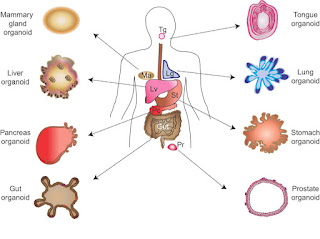Late
stage attritions in drug discovery are costly and consuming. Improbable
response of test molecules acquired in non-human systems is attributed to be
the major cause of clinical failures. While conventional in vitro methods of drug discovery do not truly represent the human system, the animal models used
for in vivo validation are also genetically and phenotypically distant from
humans.
However, recent developments in organoid culture are motivating and
elevate hopes for replacing test animals with artificial human tissue models.
Possibility of creating functional tissue ex vivo has a potential to
revolutionize the way human therapeutics is perceived. Not only will it bridge
the gap between drug development and its clinical efficacy but also help
strategizing regenerative medicine. Successful human-tissue surrogates would liberate test animals or at least minimize their use for research purposes.
Potential drug candidates tested on human-tissue equivalents are expected to generate
clinically much more relevant data. Here we deliberate upon the options and
possibilities of accomplishing human organoid models for in vitro testing and
their significance in therapeutics.

No comments:
Post a Comment